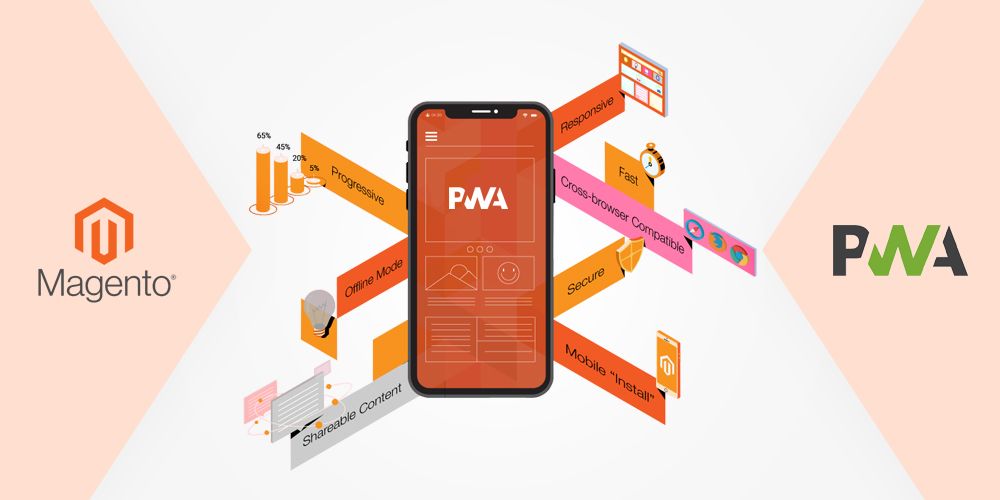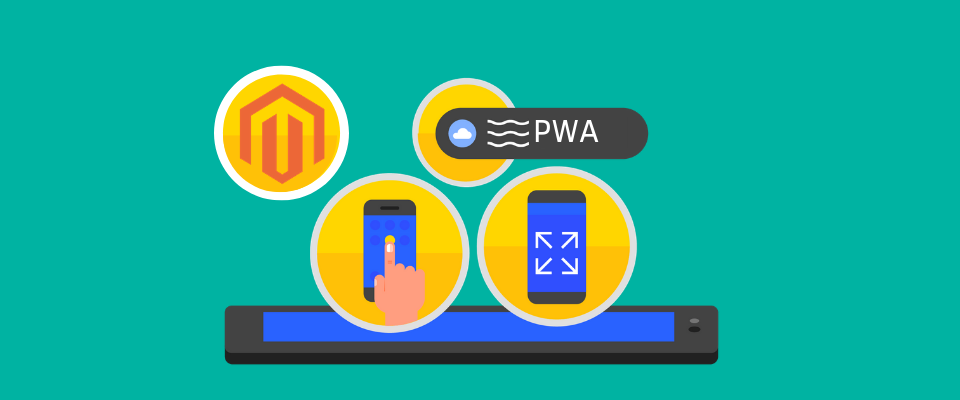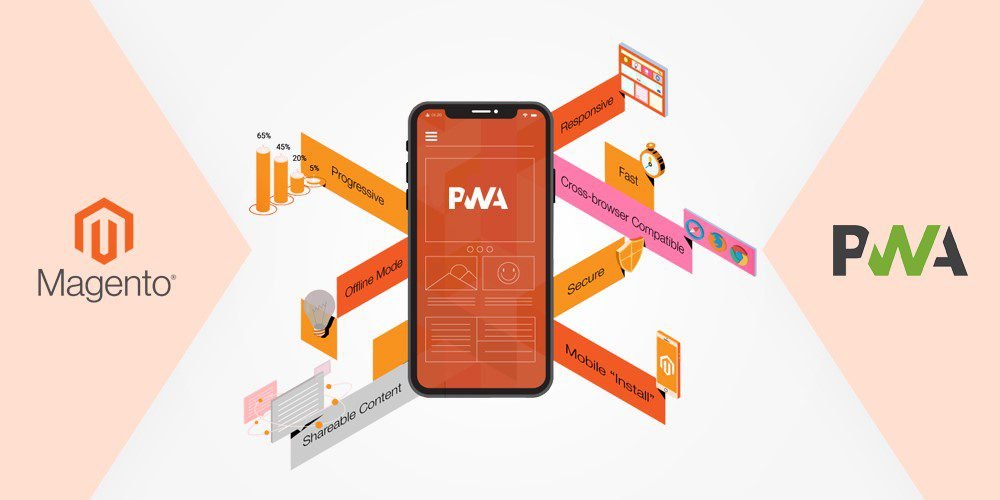
After the introduction of Magento PWA studio, it seems that we are exposed to a suite of tools that can be used to build online stores that behaves more like apps. What is PWA and why it is growing in terms of popularity, is it going to dominate the Magento 2 landscape – all these questions will be answered in the following post. Read away!
Define Magento PWA– Often known as progressive web apps; it is basically a website with an objective to look and feel like a mobile app on a smartphone. Moreover, it even allows an app-style experience in regards to notifications and offline use.
In addition to this, seismic advancement is seen in the evolution of PWAs of the mobile web. And if I am not wrong, quite similar in magnitude to the transition that happened five years ago from conventional desktop sites to responsive web design. It is a safe bet to say that PWA’s have already blurred lines between the mobile app and mobile site by equipping merchants and developers with a new front-end architecture. This allows us to leverage open web APIs to build “app-like’ experiences directly in the browser that is fast, engaging, boost online conversions, and enhance the pervasiveness of the in-store experience.
With PWA, multiple challenges can be tackled; all at once. For example-
- Faster Browsing– When compared, PWAs seem to be much faster especially in terms of interaction with and also end up providing a smoother scrolling and transitioning of pages as the experience ‘progressively’ changes thus removing the need for pages to reload. Early adopters like AliExpress have seen 100 percent jump in conversion rates since making the switch, and Google even provides a testing tool (Lighthouse), so you can benchmark your PWA’s performance.
[Image Source]
- Instant App Gratification– Being instantly discoverable and usable via the browser, PWAs have the potential to eliminate the need to download or install an app before use.
- Push Notifications– One of the most exciting propositions for online marketers is that these apps support push notifications especially on android devices, extending the opportunity for marketers to send real-time, contextual and personalized communications with a simple “one-click” opt-in directly from the PWA site.

[Image Source- Freepik]
- Rapid Re-Engagement– It may quite interest you to know that much like a native app, PWA can be saved to the home screen allowing for rapid repeat access without the need to open the browser and type in a URL. Furthermore, PWAs operate in “full-screen” mode, hiding the browser URL bar on the top and the browser navigation tools on the bottom of the screen for a native “app-like” look and feel.
Why does Magento PWA Studio matter?
According to all the reliable sources, the PWA studio is expected to be the next big thing for the mobile realm. Gone are the days when the rule of separate websites and apps across iOS conquered the world. PWA allows creating an app icon, much like a shortcut to the website on the user’s device. PWA is still just a website. However, it can bring native-app-like performance and the benefits of mobile user experience.
Much compared to a classic App Store model, the native apps add duplication of development effort across platforms– in regards to both websites and apps. At the same time, it is also seen giving businesses a tough time attracting and retaining users, even for ones who invest tens of thousands of dollars developing and promoting the applications. In addition, another critical obstacle still exists – both mobile apps and responsive web don’t convert well. As a consequence, online stores need a new set of solutions to tackle such obstacles more efficiently. And this is when Magento PWA studio comes to the rescue! Fast load time, accessibility, offline mode, cross-browsing compatibility, sharable content are some of its core benefits that cannot be ignored.
Magento PWA Studio Project Tools and Libraries

[Image Source]
Tools
- PWA-buildpack – Contains the main build and development tools for a Magento PWA.
- peregrine – Contains a collection of UI components for a Magento PWA.
- Venia theme – A proof of concept Magento 2 theme built using the PWA Studio tools.
Libraries
- Webpack – A configuration-driven asset bundler and optimizer for JavaScript applications.
- React – A JavaScript library for building user interfaces.
- Redux – A JavaScript library used for managing state in a web application.
- GraphQL – A specification for a data query language on the client-side and a service layer on the server-side. It is often seen as an alternative to using REST endpoints.
Author Bio
Rooney Reeves is a Business Development Executive. Currently Working with a Web, e-commerce development company etatvasoft.com. She is a Nature freak and she loves to travel. You can find more information about the company from here.





Leave a Reply